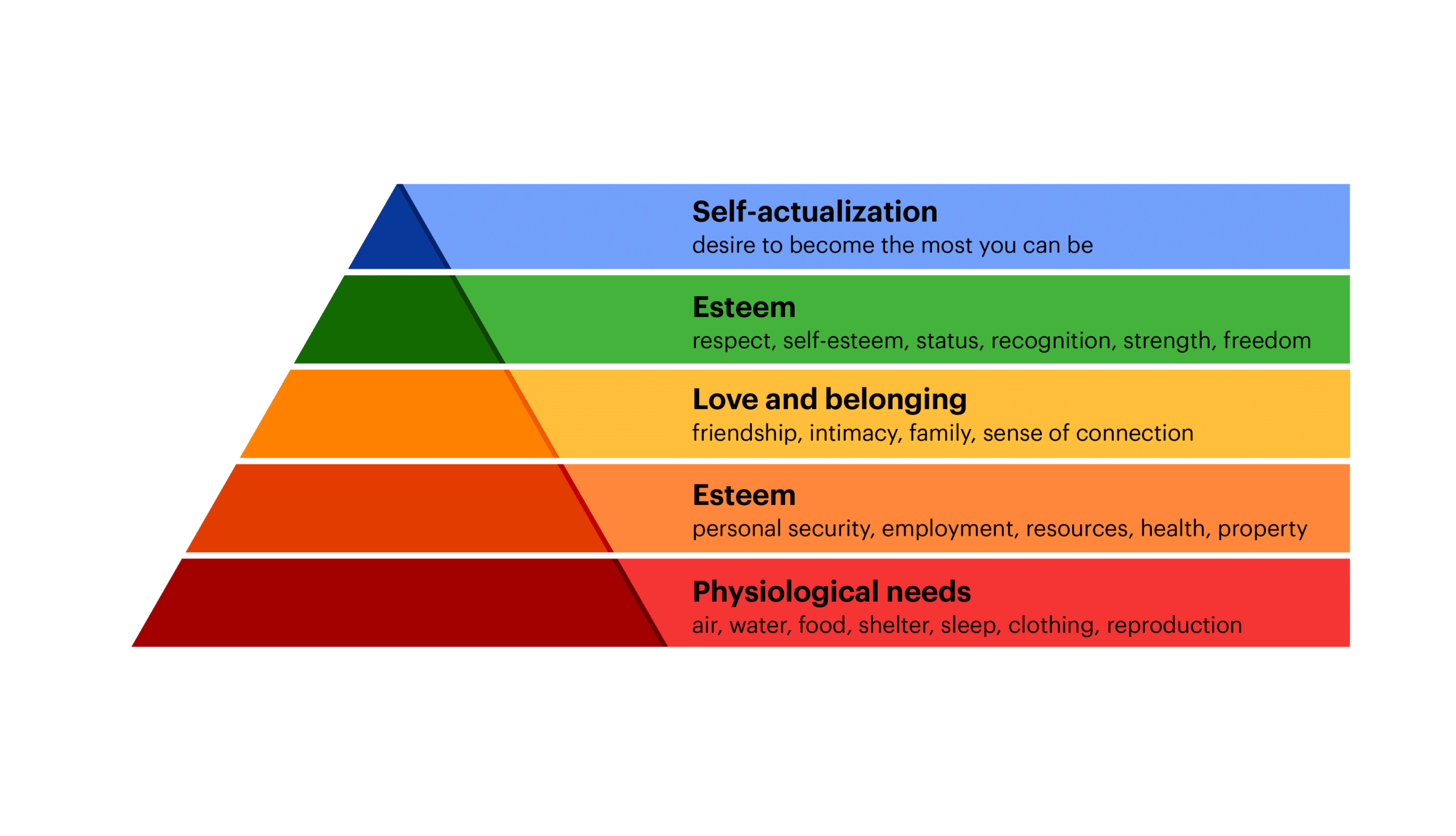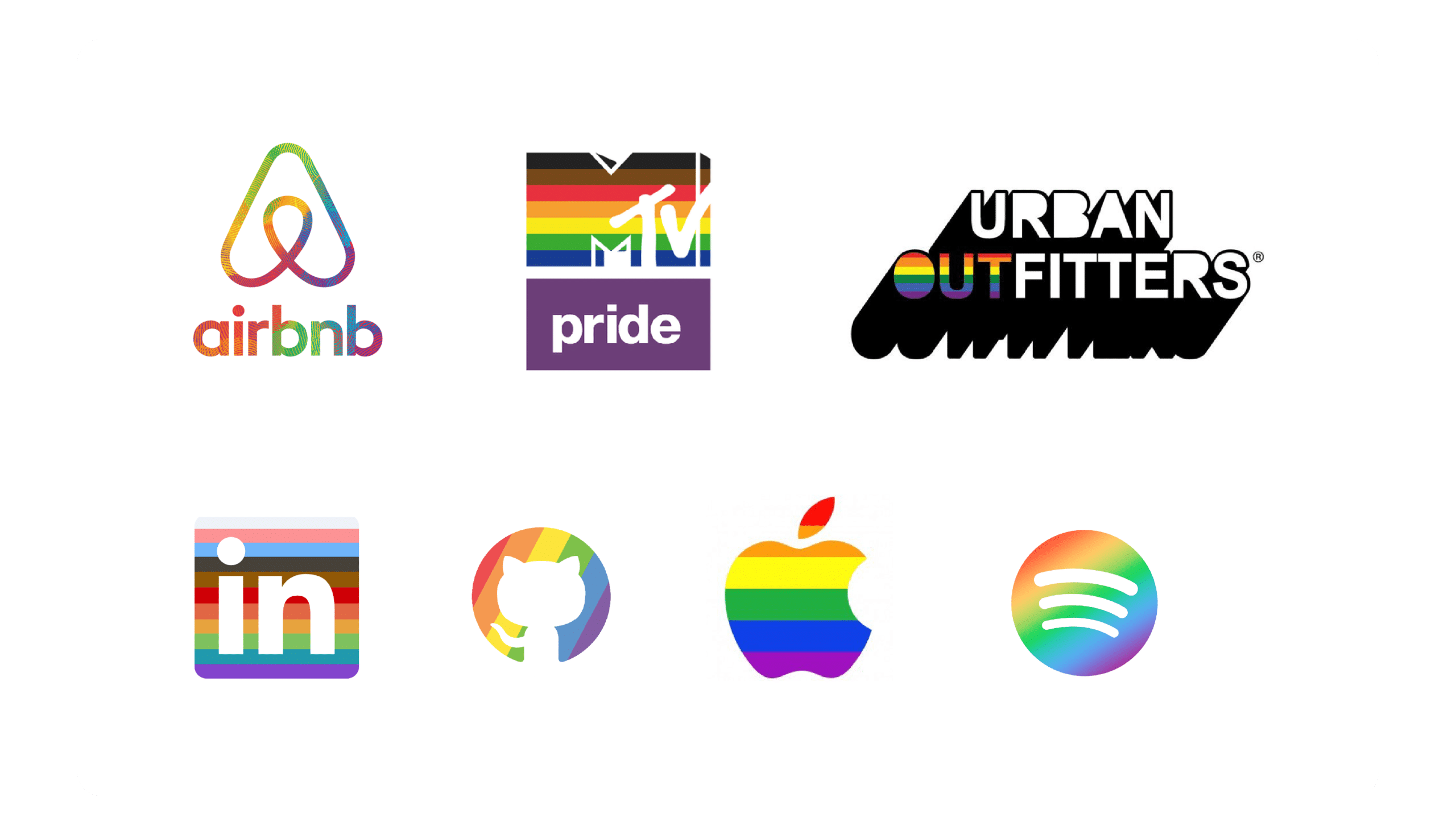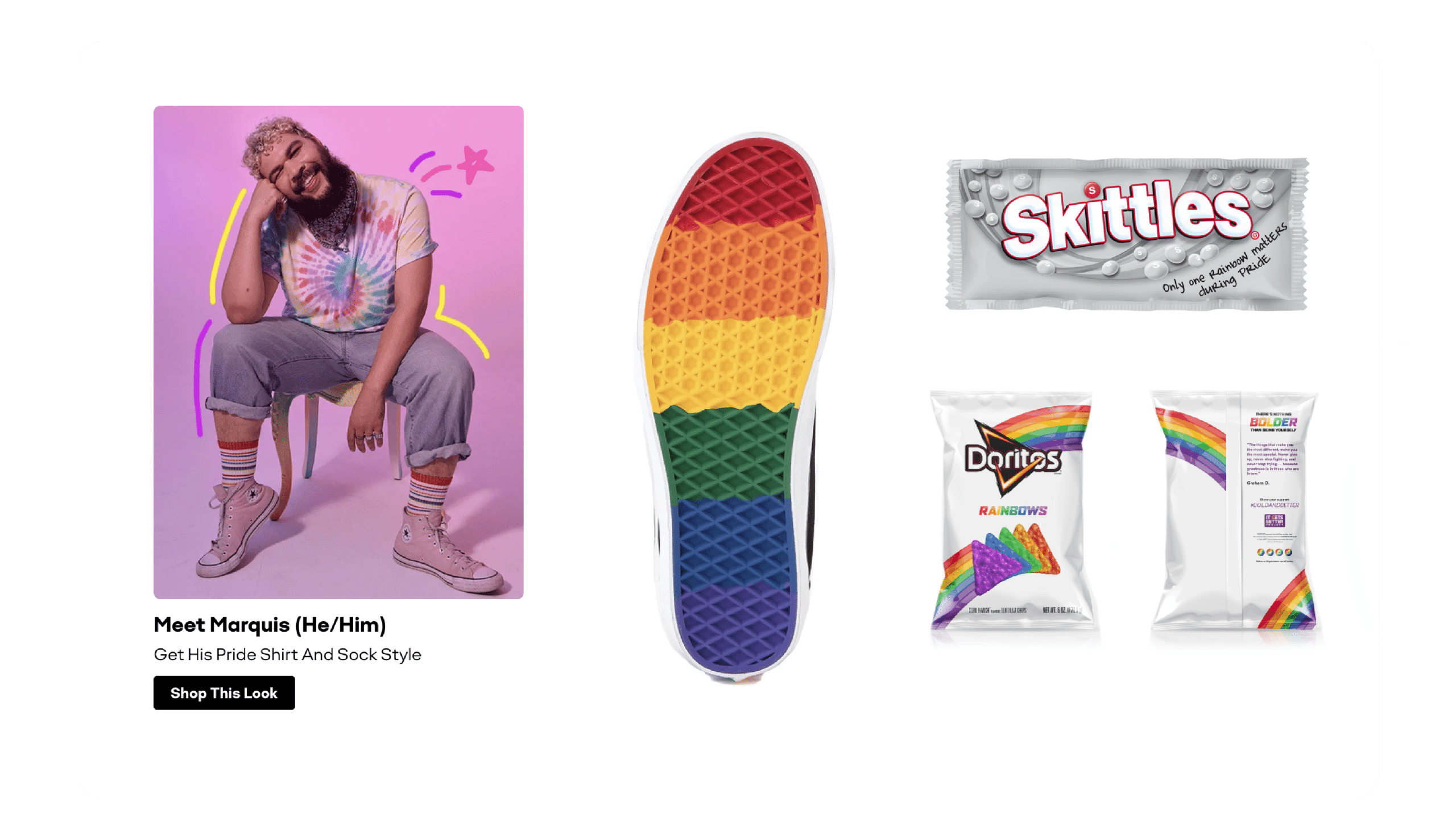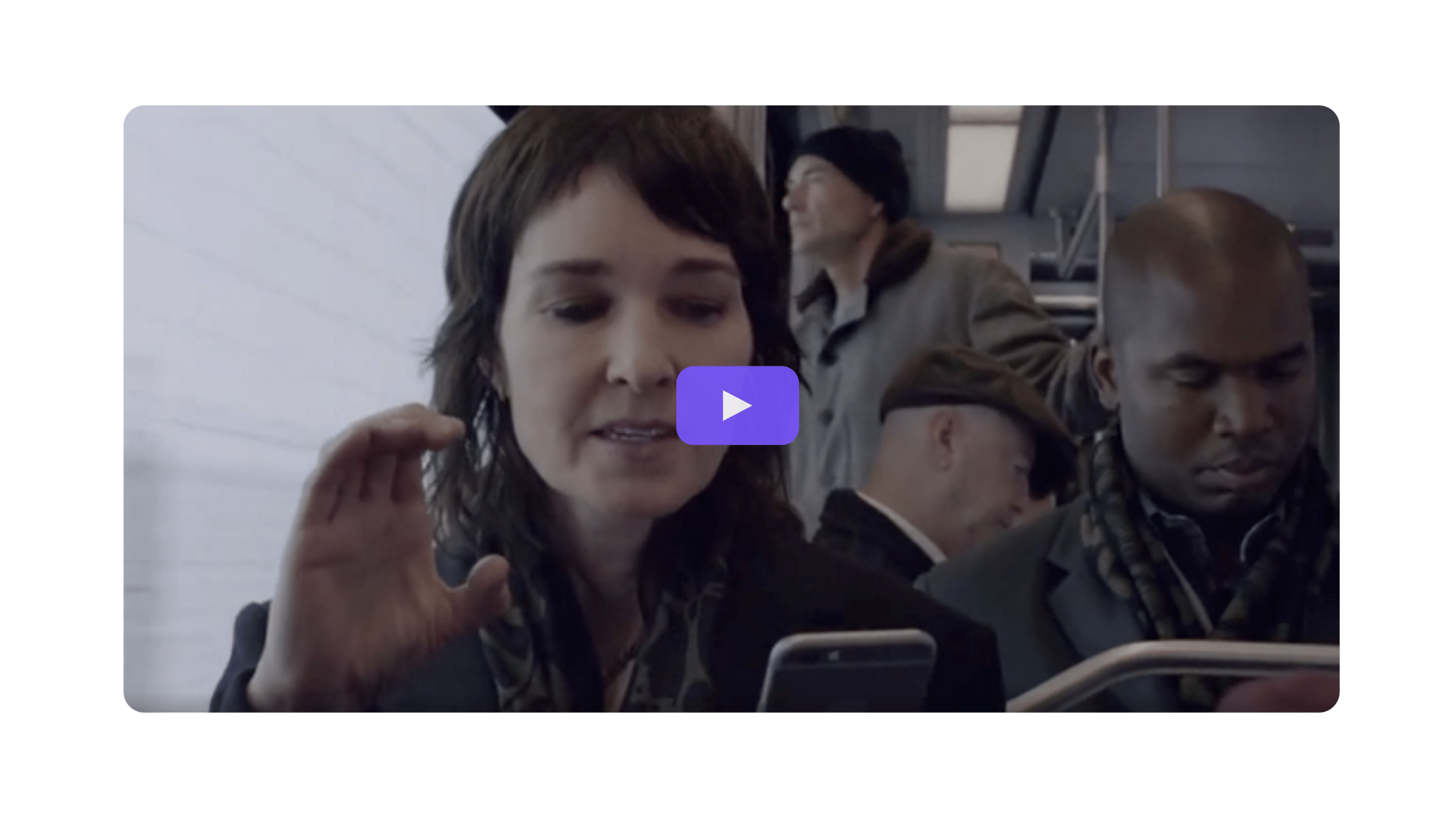As creative people and marketers, we spend a lot of time thinking about the relationship between people and brand. Hours of sorting through data trying to determine if a particular ad, campaign, color, or headline was a huge success or a massive flop (or worse—totally neutral, revealing very little of value).
We can get really obsessed, trying to get in the mind of the customer and understand them on a deeper psychological level that they don’t even understand.
I spend a lot of time reading blogs and books, or attending webinars, trying to understand why this and not that.
“Why did this button copy have a better click rate than this one?”
“Why did people seem to prefer this background color so much more than the other?”
Often, authors or webinar hosts will reference Maslow’s Hierarchy of Needs when explaining the relationship between psychology and marketing.
If you’re not familiar, the Hierarchy of Needs is a framework by Abraham Maslow which theorizes that people are motivated by five basic categories of needs: physiological, safety, love, esteem, and self-actualization. It’s also, conveniently, represented in a rainbow.
The framework is simple, but the ideas here are complex. While much time has been spent diving into each of these categories, today, I’m going to spend time on that middle piece — love and belonging.
Cultivating a sense of belonging
Ever shown up to a party by yourself? It’s terrifying. If you are like me, your first move is to make a beeline towards the bar. After that, I usually find myself scanning the room for someone I know or someone who looks familiar to me. I feel instantly more comfortable in situations when I see representation. It moves me from safety needs to belonging needs.
So what does this relationship look like between brands and their customers?
You have probably noticed the recent trend for brands changing their logos to the various LQBTQIA flags for pride month. LinkedIn, Spotify, Airbnb, and loads of others have jumped in on this trend.
Other brands have released rainbow limited edition products like Vans, Apple, Skittles, and Adidas. Some brands are even sponsoring pride content on streaming services like Hulu.
Don’t get me wrong, the more representation the better. But, inclusion is more than throwing up a rainbow flag for a month. Inclusion requires empathy, and empathy requires understanding.
I am welcoming of all types of inclusion, but if you are looking to create lasting relationships with certain communities, you must tap into the psychological need we all have as humans to belong and feel like equals. This level of representation is still very rare for most brands.
Watch these two commercials and tell me what is different.
Campbells:
This ad, while cute and representative, still has the punchline around being gay.
Wells Fargo:
This ad is not about being gay. It’s about being a family. You could easily swap the couple out for any gender or orientation. It was written with a couple in mind, not a gay couple.
Why not just write a great script and cast people, of any kind? Why limit yourself by saying these have to be a specific way? I have always found it interesting that, as marketers, we feel like we have to write specific things for specific people rather than focusing on a great story or punchline. That’s hard enough on its own.
You need visibility and representation, but in a way that doesn’t frame the queer community as outsiders, but as people. Just like everyone else.
This is important from a human-to-human level — trying to see past stereotypes and misconceived notions of what you think a person is like, and actually getting to know them for who they are, and what is important to them.
Belonging and love needs (from Maslow’s Hierarchy of Needs) are only met when we take the extra step as marketers to see and understand that all people just want to be seen and shown as equals — not as props or checkboxes.
Small steps toward inclusivity
If you are a marketer looking for more ways to ensure you are being inclusive, here are a few things you can do:
- Audit your sites and other marketing materials to ensure the photography or illustrations represent an equal balance of all people in authentic situations.
- Include pronouns in profiles and signatures (if you aren’t already).
- Push back on clients, managers, co-workers if there is feedback around inclusion and diversity.
Tip: If you are dealing with people who want to talk numbers have them google “pink money” and the rise of LQBTQIA buying power. - Share your platform with members of the LQBTQIA community throughout the year rather than just seeking them out in the month of June. Collaborate with them on things other than LGBTQIA content, and allow them the space to speak about areas of passion or expertise. There is nothing more inspiring for a young professional than to see someone who is a badass in their career, and just happens to be out.
- Above all else, check your own bias as a leader to make sure you are leading and inspiring the team around you to care about these issues.
Extra Credit: Visit your local HRC branch and spend some time with people who work there. Understand what the LGBTQIA is still fighting for and what they need from local businesses in terms of support.










